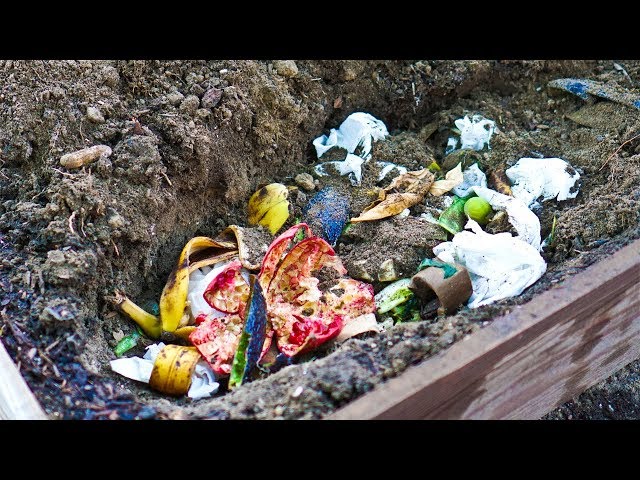Burying kitchen scraps directly in your garden can have several benefits, as well as some considerations to keep in mind. Here’s what happens when you bury kitchen scraps in your garden:
Benefits:
- Natural Fertilization: As the buried kitchen scraps decompose, they release nutrients into the soil, acting as a natural fertilizer for your plants. This can improve soil fertility and plant growth.
- Reduced Waste: Burying kitchen scraps is an eco-friendly way to reduce food waste and divert organic material from landfills.
- Enhanced Soil Structure: Organic matter from the scraps can improve the soil’s structure, making it more crumbly and easier for plants to grow in.
- Increased Soil Microbial Activity: Decomposing kitchen scraps provide a food source for beneficial soil microorganisms, promoting healthy soil ecology.
- Less Odor and Pests: Burying scraps in the garden can reduce the attraction of pests and the odor associated with composting bins.
Considerations:
- Decomposition Time: Kitchen scraps buried directly in the garden may take some time to decompose fully. This method is better suited for long-term soil improvement rather than providing immediate nutrients to plants.
- Digging and Tilling: Burying scraps requires digging holes or trenches, which can be labor-intensive. You’ll need to ensure the scraps are buried deep enough to prevent animals from digging them up.
- Pest Attraction: Depending on the type of scraps and the local wildlife, burying kitchen scraps can attract animals like raccoons or rodents. Take steps to prevent this.
- Uneven Distribution: Decomposition rates may vary, leading to uneven nutrient distribution in the garden.
- Composting vs. Burying: Burying scraps is different from traditional composting. Composting involves a controlled process, while burying is more passive. Consider which method aligns with your goals and available resources.
How to Bury Kitchen Scraps:
- Dig Holes or Trenches: Dig holes or trenches in your garden, at least 8-10 inches deep, and spaced apart to evenly distribute the scraps.
- Add Scraps: Place your kitchen scraps, such as fruit and vegetable peels, coffee grounds, and eggshells, into the holes or trenches.
- Cover and Water: Cover the scraps with soil, ensuring they are well-buried to deter pests. Water the area to help initiate decomposition.
- Maintain: Continue to bury scraps over time as they become available, ensuring a balance between green (nitrogen-rich) and brown (carbon-rich) materials.
- Be Patient: It may take several months to a year for the buried scraps to fully decompose and provide noticeable benefits to your garden.
Burying kitchen scraps directly in your garden can be a sustainable and beneficial practice, but it’s important to be aware of the considerations and ensure you manage the process correctly to maximize its advantages. Additionally, it can be particularly useful for long-term soil improvement and in areas with a substantial amount of outdoor space.


